Tips to Extend the Life of My Garden Hose: Simple Care and Maintenance
Taking care of your garden hose might seem simple, but it can make a big difference in the long run. A well-maintained hose not only performs better but also lasts longer, saving you money and effort. By following a few easy steps, you can extend the life of your garden hose and keep your garden looking great all season.
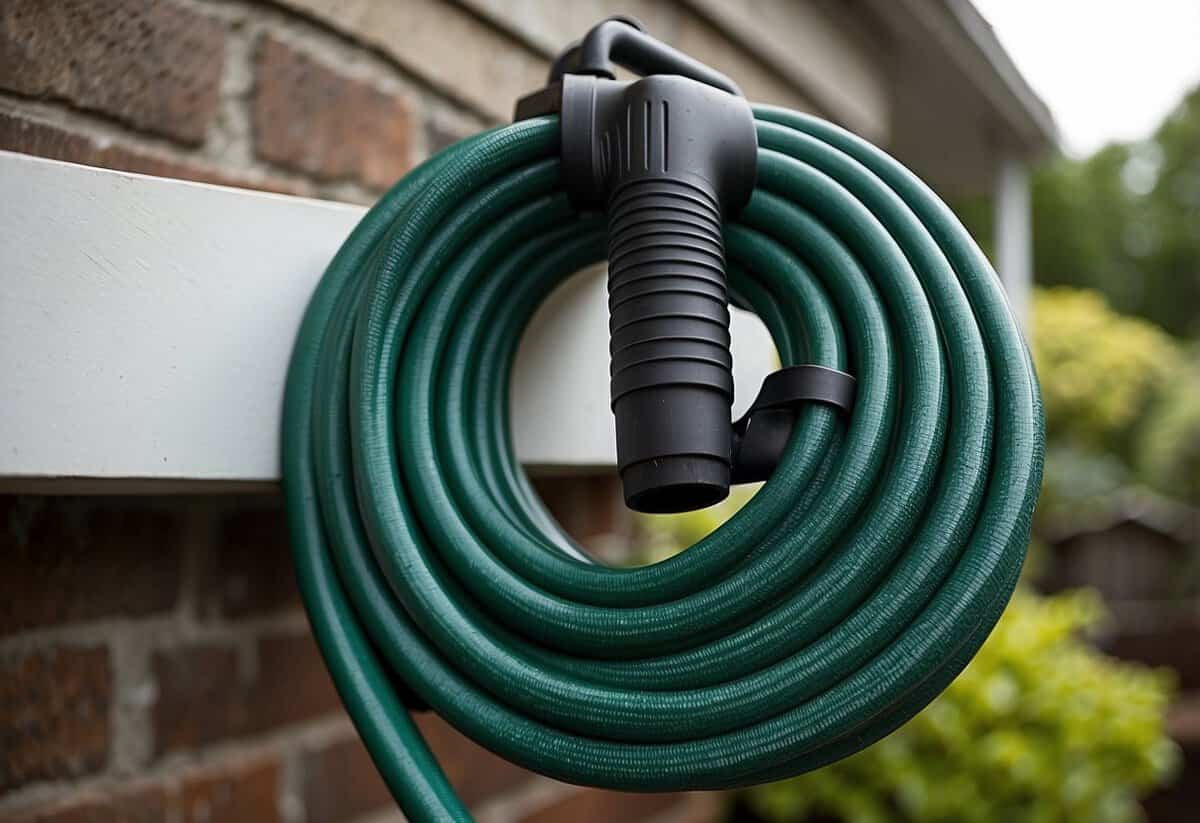
Whether you use your hose daily or just occasionally, proper care is key to ensuring it stays in good condition. Regular maintenance and some handy tips can prevent common issues like leaks, kinks, and wear. Keep reading to find out how you can keep your garden hose in top shape for many years.
1) Use a Hose Reel

Using a hose reel is a great way to keep your garden hose in good shape.
First, start by disconnecting the hose from the spigot and removing any attachments.
Then, roll the hose onto the reel, guiding it carefully to avoid kinks or tangles.
A hose reel helps prevent damage and makes storage neat and easy. For more tips on using a hose reel, visit this guide.
2) Store in Shade
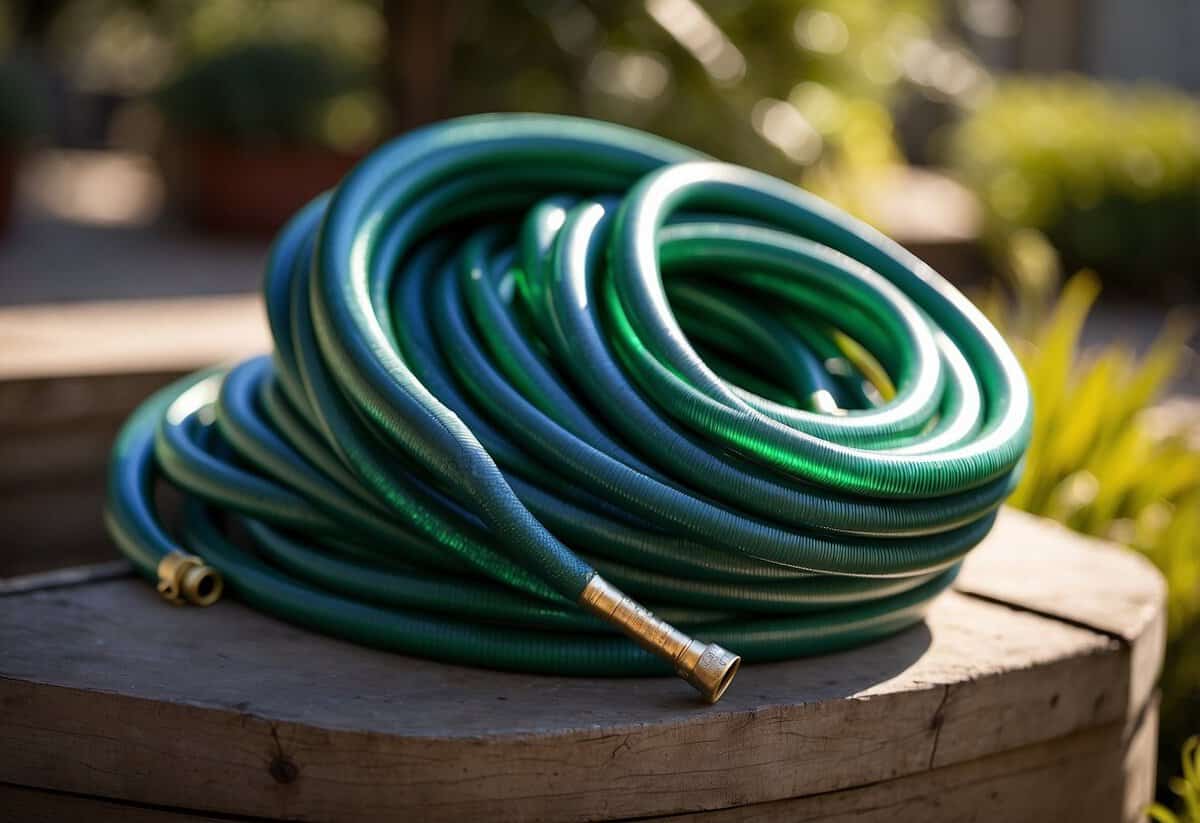
Keeping your garden hose in the shade can greatly extend its life.
When exposed to direct sunlight, the hose material breaks down faster. UV rays can cause cracking and brittleness.
Find a cool, shaded spot in your yard or garage to store your hose. Doing this helps it last longer and perform better.
3) Drain After Use
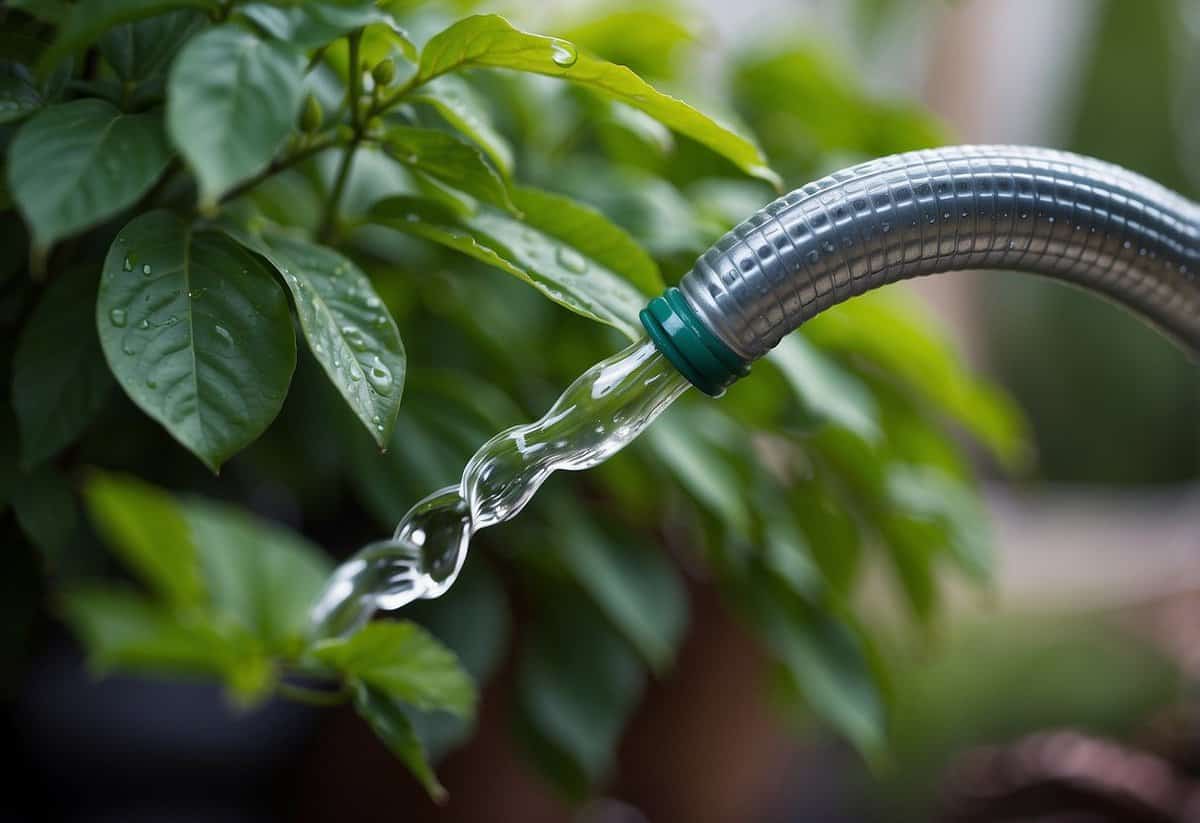
Always drain your garden hose after using it. This prevents water from sitting inside and causing damage.
Leaving water in the hose can lead to mold growth or freezing in cold weather. Both can shorten the lifespan of your hose.
To drain, simply disconnect and stretch it out, allowing all the water to flow out.
4) Avoid Kinks

To avoid kinks in your garden hose, start by storing it properly. Always coil your hose after use. Use a reel or hanger to keep it off the ground and neatly coiled.
When using the hose, gently uncoil it and avoid sharp bends. Consider using hose guides to prevent dragging over sharp edges.
By handling your hose with care and avoiding tight loops, you can greatly reduce the chances of kinks forming.
5) Inspect Regularly
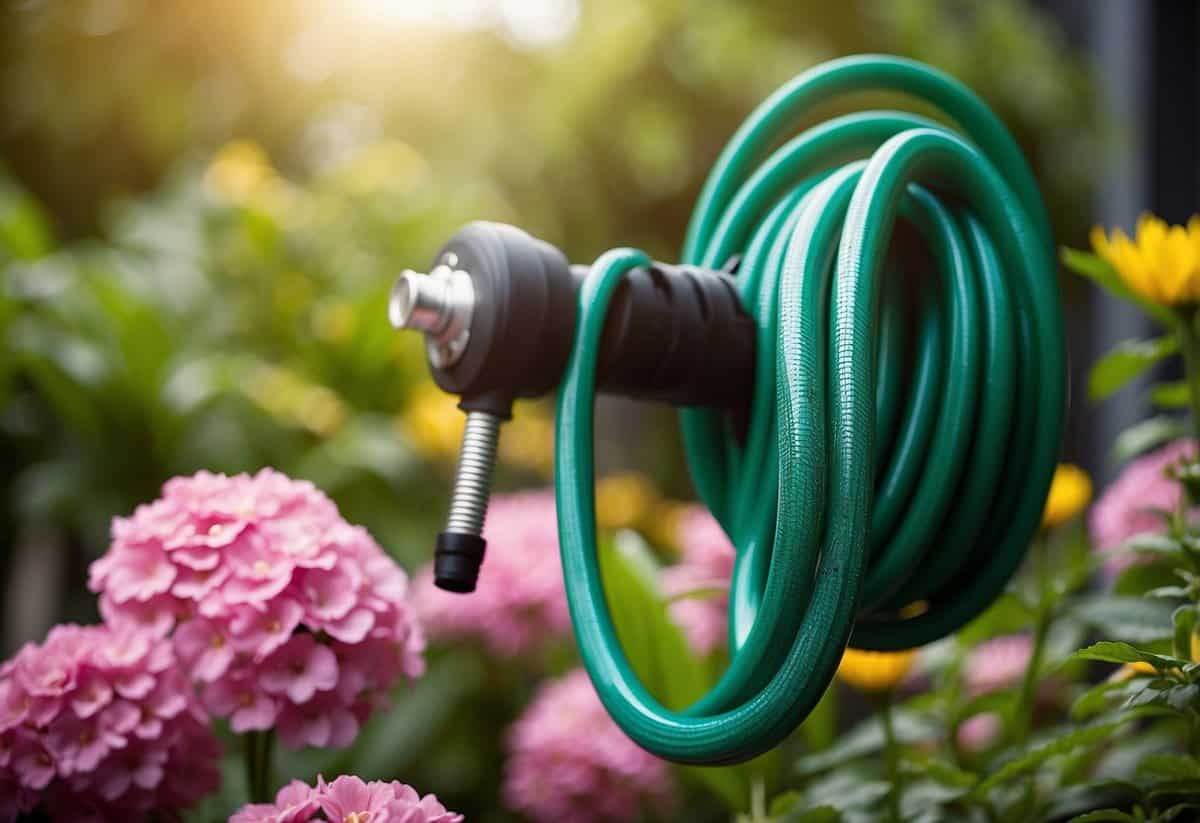
Check your garden hose often for any signs of wear or damage. Look for cracks, leaks, or weak spots along the hose.
Pay close attention to the connectors. Make sure they are not rusty or cracked. If you find any issues, replace the damaged parts quickly.
Regular inspections can help catch small problems before they turn into big ones. To learn more about preventing leaks and extending the hose lifespan, visit tips to prevent leaks.
6) Repair Leaks

If you notice a leak in your garden hose, don’t worry. You can fix it easily with a few tools.
First, cut out the damaged section of the hose using sharp scissors. Next, choose a hose mender that matches the diameter of your garden hose.
Insert the barbed end of the mender into each cut end of the hose. Secure the mender with a clamp or screws until it’s tight. Finally, turn on the water to check for any additional leaks. If needed, tighten the clamps a bit more.
7) Use Hose Guides

Hose guides are a great way to prevent damage to your garden hose. They help steer the hose around corners and delicate plants.
By using hose guides, you can avoid dragging the hose over sharp edges or rough surfaces. This reduces the chances of punctures and tears.
Place hose guides at points where the hose might bend or rub. This helps in keeping your hose in good condition for a longer period.
You can find hose guides at most garden centers or online stores. They’re easy to install and very effective.
By investing in hose guides, you’ll save time and money on repairs.
8) Avoid Dragging
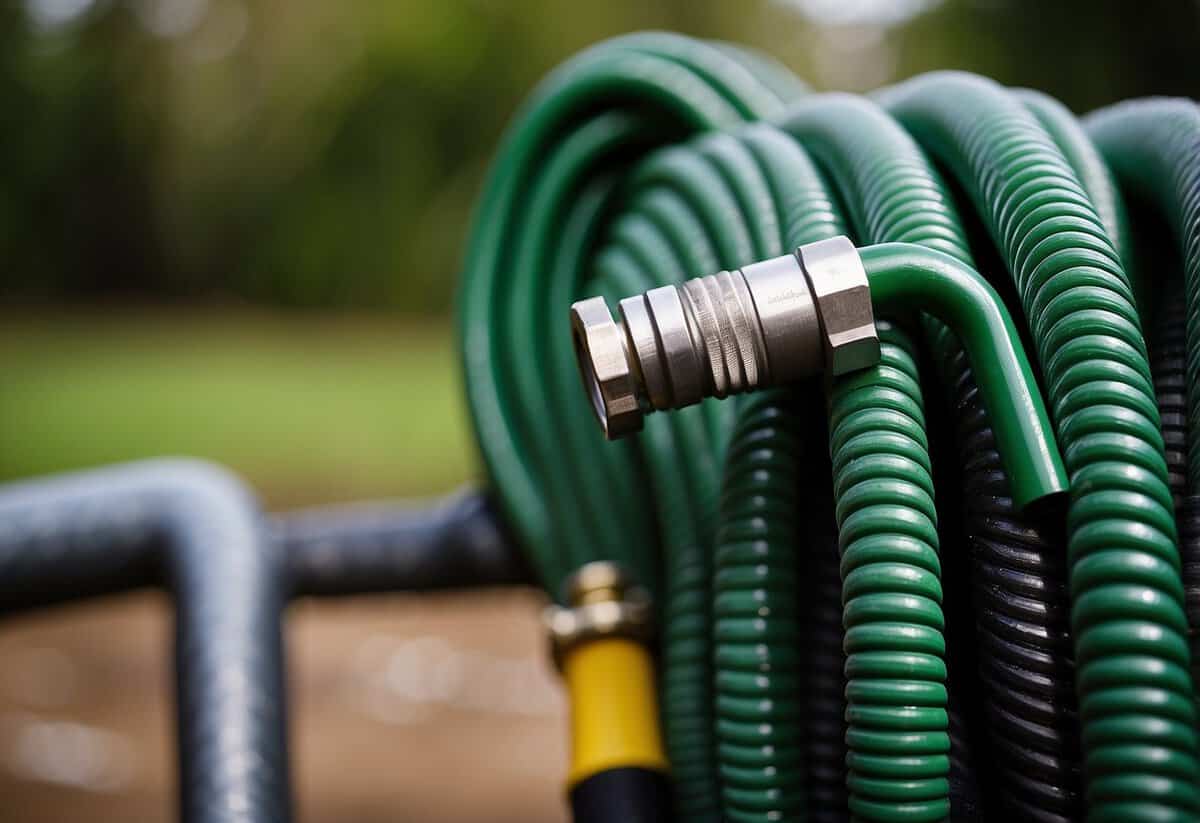
Dragging your garden hose across the ground can cause serious damage. It can lead to leaks around the nozzle and attachments. Instead, use a hose reel or pull on the hose itself, not the nozzle.
You should also avoid dragging the hose over rough surfaces. This can create small tears that weaken the hose. Follow these simple steps, and your garden hose will last much longer.
9) Fit a Nozzle

Fitting a nozzle to your garden hose is a great way to control water flow. It helps in watering different plants with varying water needs.
First, make sure the nozzle is compatible with your hose. Hold the hose firmly and screw the nozzle clockwise onto the end of the hose.
If you’re having trouble, try using a wrench for a better grip. Once fitted, turn on the water and check for leaks. Adjust the nozzle as needed for different spray patterns.
Using a nozzle can also help save water by allowing you to turn the water off right at the end of the hose.
10) Clean with Vinegar

Cleaning your garden hose with vinegar is a simple and effective way to keep it in good condition. First, disconnect the hose from the tap and take off any attachments.
Next, fill a bucket with water and add a generous amount of white vinegar. Let one end of the hose sit in the mixture, then coil the hose to submerge it completely. You can let it sit for around 30 minutes.
After soaking, rinse the hose thoroughly to remove any remaining vinegar solution. Finally, hang the hose in a well-ventilated area to dry. This helps prevent any mildew or mold growth.
For more details, see this guide.
Proper Storage of Your Garden Hose

Storing your garden hose the right way can help extend its life and keep it in good condition. By choosing the right storage location and using appropriate equipment, you can protect your hose from damage.
Choosing the Right Storage Location
To keep your garden hose in top shape, find a cool and shaded spot for storage. Direct sunlight can cause the hose material to deteriorate faster. Look for a place that is well-ventilated and dry to prevent mold and mildew growth.
Avoid storing your hose directly on the ground to prevent wear and tear. Instead, elevate it to keep it from getting dirty or stepped on. A covered area, like a garage or a shed, is ideal as it provides protection from the elements.
If you don’t have a dedicated structure, use a portable hose reel cart that you can move to a shaded spot. This flexibility ensures your hose stays protected, no matter where you store it.
Using Hose Reels and Hangers
Using hose reels and hangers can help maintain the integrity of your garden hose. Reels keep your hose neatly coiled, reducing the risk of kinks, tangles, and damage. Opt for a reel with a smooth winding mechanism to make it easy to roll and unroll the hose.
Wall-mounted hose hangers are another great option. They keep the hose off the ground and ensure even weight distribution, which helps prevent internal damage. Choose a hanger that’s sturdy and rust-resistant to ensure long-term durability.
Portable hose reels are convenient if you need mobility. They protect your hose while allowing easy transport. Consider reels with built-in storage for nozzles and attachments for added convenience.
Remember, proper storage equipment can significantly extend the life of your garden hose by keeping it organized and protected.
Regular Maintenance and Cleaning

Taking care of your garden hose through regular maintenance and cleaning can help it last longer and work better. Key tasks include inspecting for damages and using effective cleaning methods.
Inspecting for Damages
Frequent inspection is crucial to catching problems early. Look over the entire length of the hose for cracks, holes, and leaks. Pay special attention to the areas near the connectors, as these spots are prone to wear.
Bend the hose slightly to reveal hidden cracks or tears. If you notice any damage, use a repair kit to fix it. Simple tools like a screwdriver and a sharp knife are often all you need for most repairs, which are much cheaper than buying a new hose.
Checking for kinks and tangles is also important. Repeatedly leaving the hose kinked can cause long-term damage. Straighten out any kinks and make sure the hose is properly coiled when storing it.
Effective Cleaning Methods
Cleaning the hose can remove dirt and debris that could clog or damage it. Start by flushing the hose with water to clear out loose particles. For a deeper clean, fill the hose with a solution of water and a bit of dish soap or vinegar.
Let the solution sit in the hose for about 30 minutes to break down any buildup inside. Then, empty the solution and rinse the hose thoroughly with clear water to remove any soap or vinegar residue.
After rinsing, coil the hose loosely and hang it in a well-ventilated area to dry completely before storing it. This helps prevent mold and mildew from forming inside the hose, extending its lifespan significantly. Always remember to fully drain the hose after each use to avoid any water freezing inside and causing damage.







